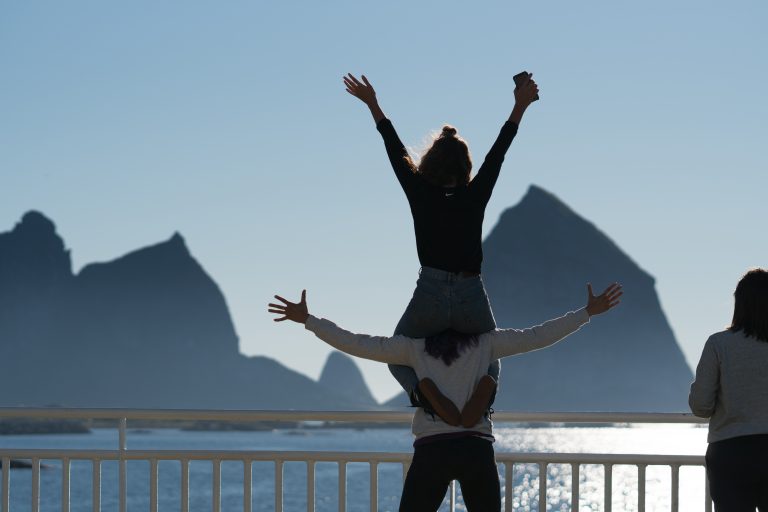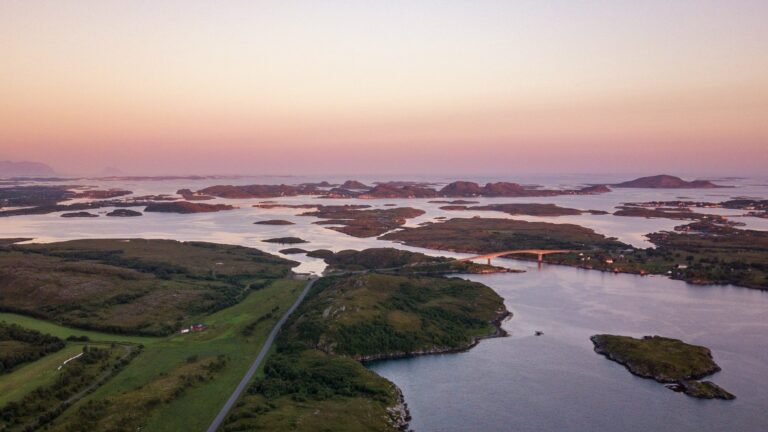10 Unforgettable islands on the Helgeland Coast
Come join us where sky and sea meet, and coastal communities welcome you into sheltered harbours with open doors. Experience the hospitality that has greeted generations of fishermen and travellers. Get a feel for the island’s slower pace of life, and discover the big experiences in the small moments.
Ylvingen – The ‘Himmelblå’ Island
The small island of Ylvingen is a gem, with a quiet glow of its own, tucked between Brønnøysund and Vega. It’s often called Himmelblåøya—Blue Sky Island—after serving as the main location for the NRK series Himmelblå. And the name fits. In the island’s low-lying landscape, the sky stretches wide and blue. And so does the surrounding sea.
 Simon Fosseim / Visit Helgeland
Simon Fosseim / Visit Helgeland
Today, around 30 people live on the island year-round, and in summer the area around Himmelblå Brygge comes alive with activity. Here, visitors can join kayak tours and courses, guided sailing trips, exploring the shoreline, freediving, and enjoy long summer evenings by the water’s edge.
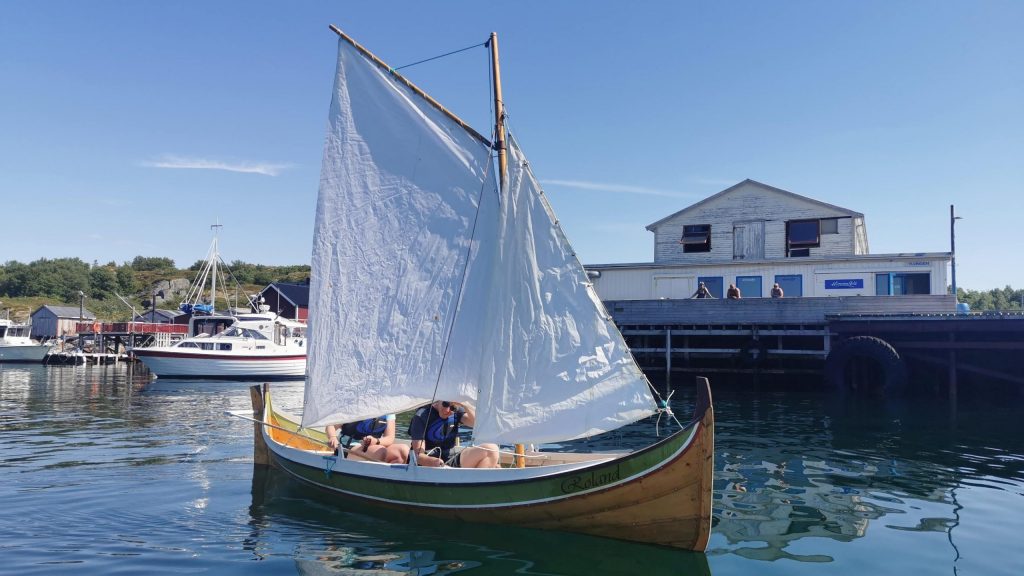 Mats Grimsæth
Mats GrimsæthThe World Heritage Island of Vega
Vega is known for its unique eider tradition—a delicate cooperation between people and nature that’s still alive here. Every spring, eider guardians build small houses and shelters for the birds, where they nest and leave behind the finest, most exclusive down once their ducklings have hatched. The tradition is so special that it has earned a place on UNESCO’s World Heritage List, and you can learn more about it at the engaging exhibitions at the Vega World Heritage Centre.
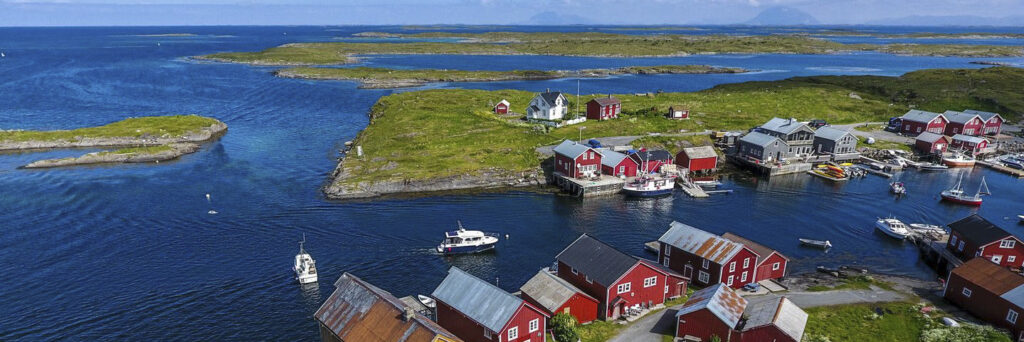 Ina Andreassen
Ina Andreassen
Vega is a large island, with towering mountains, a living cultural landscape, and a stunning archipelago. You can spend hours hiking between mountains and shoreline, cycling country roads through fields and meadows, or paddling through the diverse archipelago. Hike up the Vegatrappa stairs, try the Vega Via Ferrata, enjoy a great dinner at Vega Havhotell, sleep in a traditional eider house (ehus), and let your days flow at whatever pace you like—fast or slow.
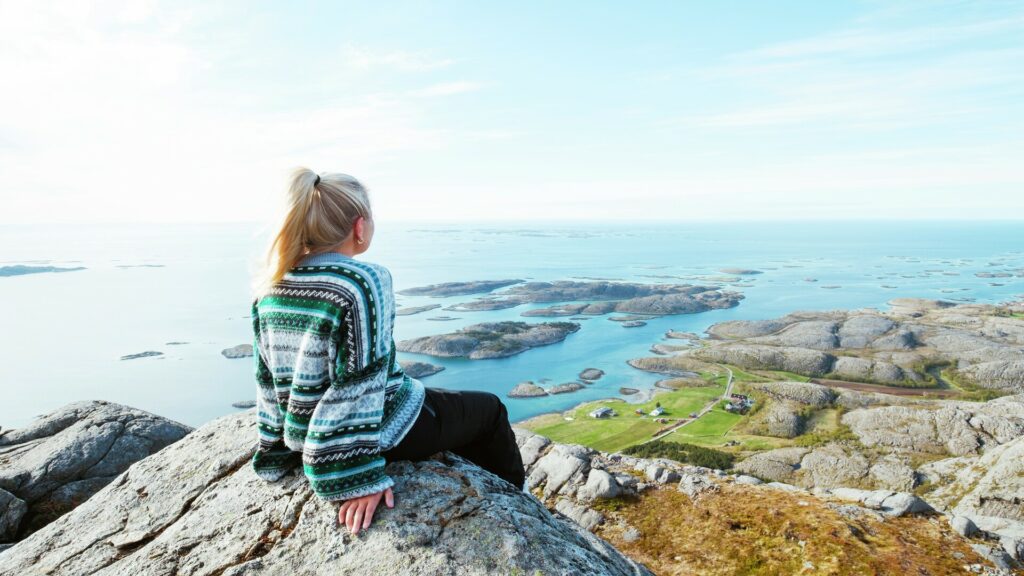 Kristoffer Møllevik / Visit Helgeland
Kristoffer Møllevik / Visit HelgelandThe outer islands of Lånan
Out toward the exposed open sea, between Vega and Herøy, lies a myriad of low islands and skerries. This is the islands of Lånan, where the sheltered archipelago offers refuge to the eiders that return each year to raise the next generation. Here, the UNESCO-listed eider tradition is still very much alive.
 Cyril Ruoso
Cyril Ruoso
There are still eider guardians on the island. Every year, they build houses for the birds, line the nests with dry seaweed, and gather and clean the down once the ducklings have left. Just like the coastal fisher-farmers have done for centuries—in harmony with nature, and on nature’s own terms. Visiting Lånan is a rare experience. One of the most exclusive things the Helgeland coast has to offer—and at the same time, one of the most down-to-earth and authentic.
The Herøy islands
The archipelago of thousands of islands and skerries that begins at Vega stretches north to the many islands of Herøy. Here, you’ll find a paddler’s paradise among the shallow, sheltered waters around Sandvær and Husvær—perfect for exploring by kayak. You’ll also find scenic cycling routes, charming cafés, and inviting shops on the larger islands of Nord-Herøy, Sør-Herøy, Øksningan, and Seløya. Stop by the fabulous flower shop Etcetera, visit the cosy café and shop at Skolo, and enjoy a long summer evening at Herøy Brygge.
 Kristoffer Møllevik / Visit Helgeland
Kristoffer Møllevik / Visit Helgeland
In this low-lying coastal landscape, you’ll have a great view of the evening and midnight sun almost wherever you go—and it’s easy to find a sheltered cove, a small hilltop, or a quiet pier where you can simply relax and take in the summer night.
Read more about the Herøy islands
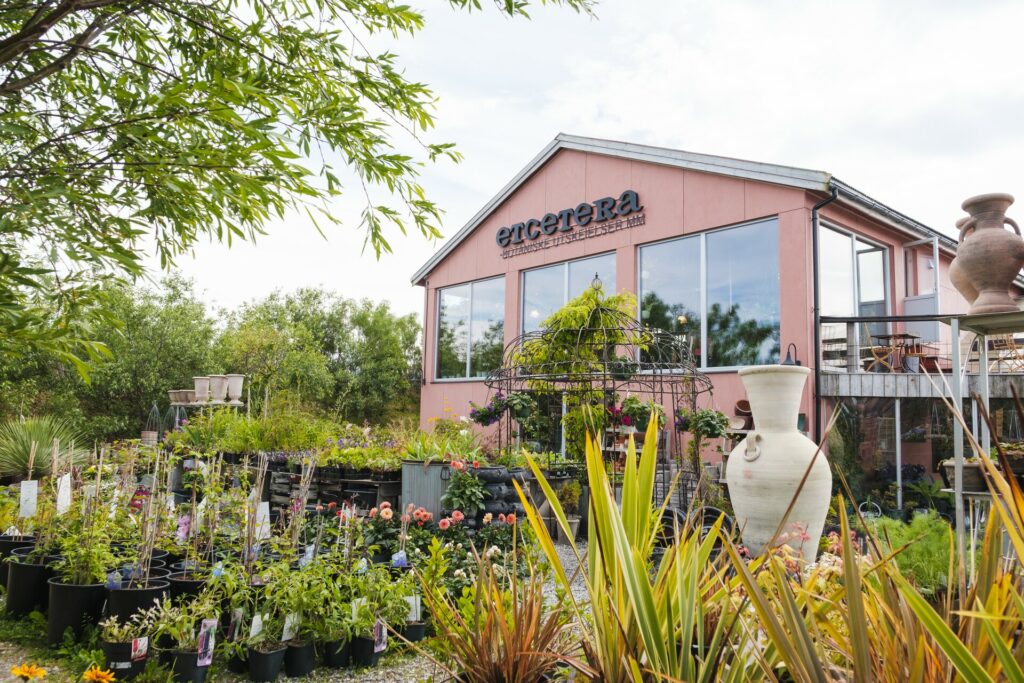 Kristoffer Møllevik / Visit Helgeland
Kristoffer Møllevik / Visit HelgelandDønna
Continue your journey north from Herøy and you’ll reach the large island of Dønna. This is the realm of Dønnamannen—the mountain whose sharp peaks rise nearly 1,000 metres above the island and the sea below. The hike to the top is demanding, but the reward is one of the most spectacular views along the Helgeland coast.
 Kristoffer Møllevik / Visit Helgeland
Kristoffer Møllevik / Visit Helgeland
Dønna is a large island with a varied landscape. After passing the towering Dønnamannen, you’ll find an open cultural landscape and vast outdoor areas with small mountains, lakes, and sheltered coves. It’s a beautiful place for exploring—whether cycling along quiet country roads, hiking among the hills and lakes, or paddling through inlets and around headlands.
Spend a sunny day at the lovely beach at Breivika, visit the medieval Dønnes Church and the stately Dønnes Gård. Indulge in handmade treats at Sjokoladebrygga, explore Iron Age burial mounds, and wind down the day with a fishing rod in hand, gentle waves beneath the boat, and the evening sun glowing golden on the horizon.
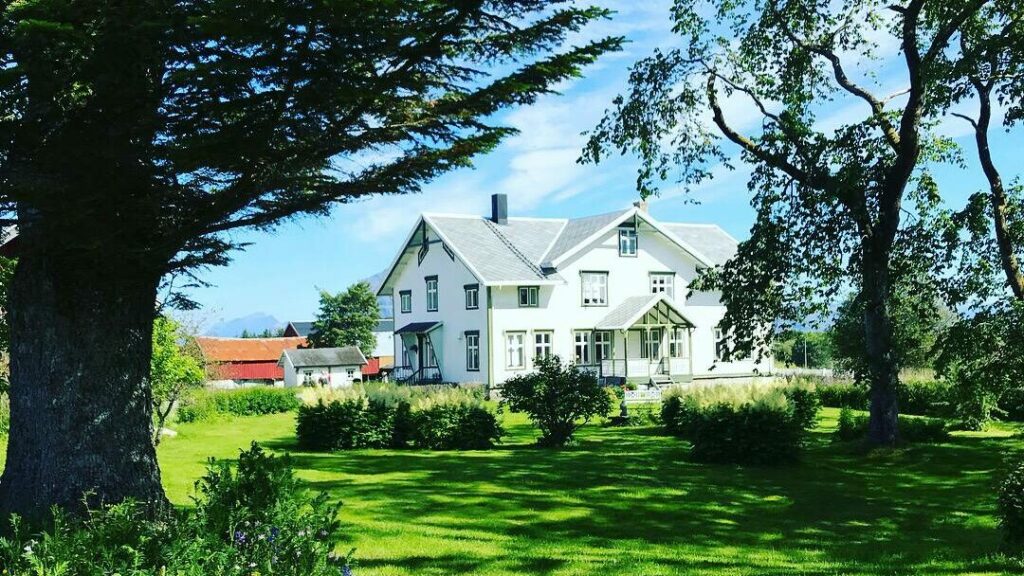 Dønnes Gård
Dønnes GårdKvarøy
Tucked between Lurøy, the Tonnes Peninsula, and Hestmona with the legendary fairy-tale mountain Hestmannen, lies the charming little island of Indre Kvarøy. Sheltered and peaceful, it’s close to everything—yet still feels like a small slice of paradise. It’s a warm island community where a strong spirit of volunteerism and creativity shines through. You’ll feel it at the cosy Tampen Café, the impressive activity hall, the well-designed pump track, and the island’s excellent restaurant.

With lovely beaches and swimming spots, great fishing areas, and hardly any traffic, the island is a favourite holiday spot for families looking for just the right mix of activity and relaxation. And with well-known peaks like Hestmannen and Rødøyløva nearby, along with beautiful kayaking routes around Ytre Kvarøy, it’s also a perfect base for more active adventures on the Helgeland coast.
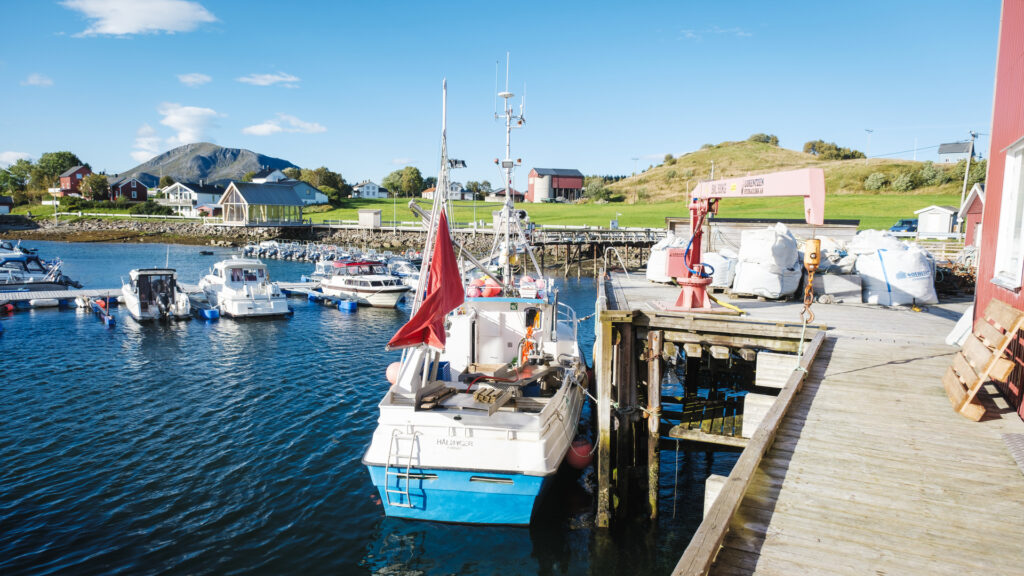 Kristoffer Møllevik / Visit Helgeland
Kristoffer Møllevik / Visit HelgelandLovund
If you venture even farther from the mainland, you’ll reach Lovund. Here, beneath the dramatic Lovund Mountain, you’ll find a modern and vibrant island community—home to around 500 year-round residents and hundreds of thousands of summer visitors. For just as surely winter gives way to spring, between 200,000 and 300,000 puffins return to the island each April. They nest in the bird cliffs of Lovundfjellet throughout the summer, and watching the flocks return from the sea to feed their chicks is an awe-inspiring sight.
 Kristoffer Møllevik / Visit Helgeland
Kristoffer Møllevik / Visit Helgeland
Lovund is truly a place to slow down. Enjoy a fine dinner at the elegant Lovund Hotel, an excellent cup of coffee at the roastery and coffee bar The Coast Coffee, and take in the silence of the bird cliffs on a long, light summer night. Stroll through the charming village, forget the time, and let the day take its course.
 Hans Petter Sørensen / FarOutFocus
Hans Petter Sørensen / FarOutFocusTræna – at the Arctic Circle
The people of Træna are often called Havfolket—the people of the sea—and with good reason. They live far out at sea, about as far from the mainland as you can get, with the open ocean stretching endlessly to the west and the Arctic Circle running straight through the islands. Sheltered by the Træna mountains, which rise like a windbreak against the ocean, the people here have found safe harbour for thousands of years. Træna is believed to be Norway’s oldest fishing village—and it’s very much alive to this day.
 Marvin Kuhr / Visit Helgeland
Marvin Kuhr / Visit Helgeland
The village on Husøya is full of creativity and art. You’ll find street art and sculptures in gardens, on house walls, and out in the open landscape. Just walking around the village is an experience in itself. Have a coffee at the local café, a beer at the pub, or an ice cream on the village’s own downtown beach. Learn more about the long history of the fishing community at the Træna Museum, visit the curious Petter Dass Chapel, and try out the escape room or the disc golf course.
And if you get the chance, plan your visit during the Træna Festival. That’s when the island comes alive with guests and artists from Norway and abroad—for one of the country’s most spectacular festivals.
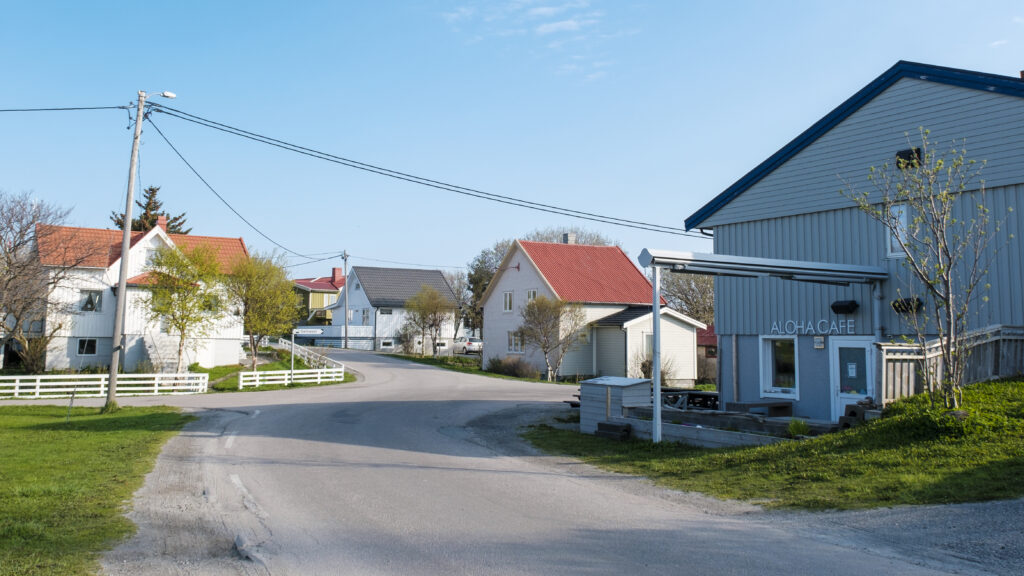 Kristoffer Møllevik / Visit Helgeland
Kristoffer Møllevik / Visit HelgelandMyken
North of the Arctic Circle, 32 kilometres from the mainland and 20 kilometres from the nearest inhabited island, the islets and skerries of the fishing village of Myken cling tightly together. Far out at sea, facing the rough waters of the open ocean. But with a safe harbour and rich fishing grounds, it’s remarkable what people have built here –at its peak, around 150 people were living off the sea, far from the reach of sheriffs, taxmen, and priests..
 Kristoffer Møllevik / Visit Helgeland
Kristoffer Møllevik / Visit Helgeland
Today, Myken is home to a small year-round community, and the barrels shipped from the island no longer carry fish, but top-quality whisky from the world’s first Arctic whisky distillery. In summer, the little island community comes alive with holidaymakers and cottage owners who keep houses and gardens so well tended that on warm days, it’s a slice of coastal idyll.
You can enjoy a delicious meal at the restaurant in the old fish processing plant. Catch a small concert in the Whisky Cathedral. Chat over coffee at the local store. And simply let the days pass gently, in a place where weather and wind matter more than clocks and calendars.
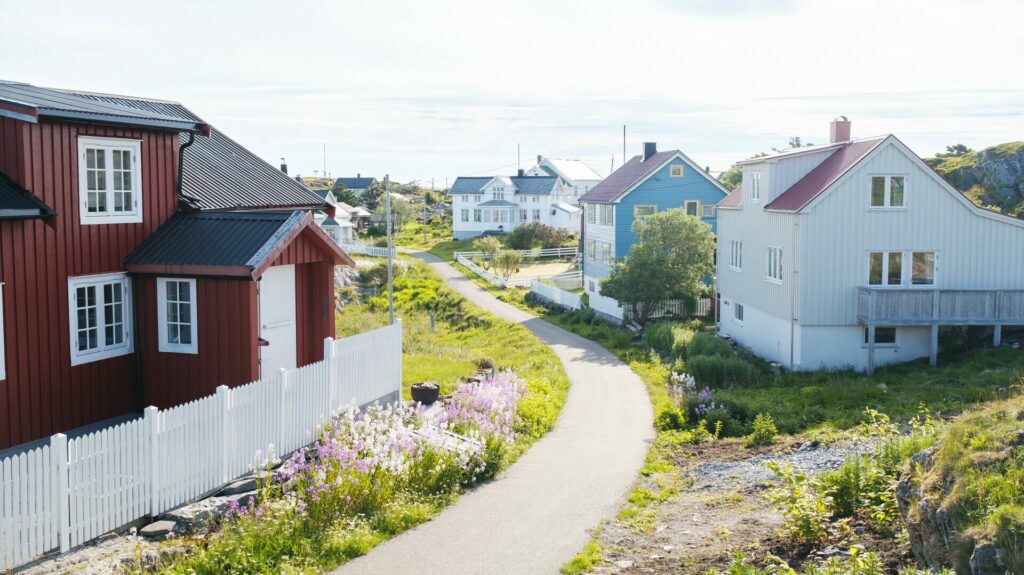
Selsøyvik in Rødøy
A short boat ride south of the better-known island of Rødøya and the iconic mountain Rødøyløva lies Selsøyvik, connected by road to its larger neighbouring island, Rangsundøya. Here you’ll find Selsøyvik Old Trading Post—almost like Helgeland’s own little version of Kjerringøy. You can stay in historic buildings or at the guest harbour, enjoy a good meal at the restaurant, browse the charming general store, and spend long summer evenings in a boat or kayak among the skerries and small islands nearby.
 Mye i media, Rami Skonseng
Mye i media, Rami Skonseng
The trading post is a true gem, in continuous operation since the 1600s. Many a jekt—a traditional cargo boat—likely stopped here on its journey from Lofoten, loaded with stockfish bound for Bergen and ports farther south. The buildings have been beautifully preserved and restored, and you can still feel the history in the old timber walls.
From here, it’s just a short distance to Rangsundøya’s coastal hills and hiking areas, or to island gems like Hestmona with the fairy-tale mountain Hestmannen, Gjerøya with Lyngvågen Café and the beautiful Losvikhagen at Gjerøyhamn—and of course, Rødøya with the majestic Rødøyløva.
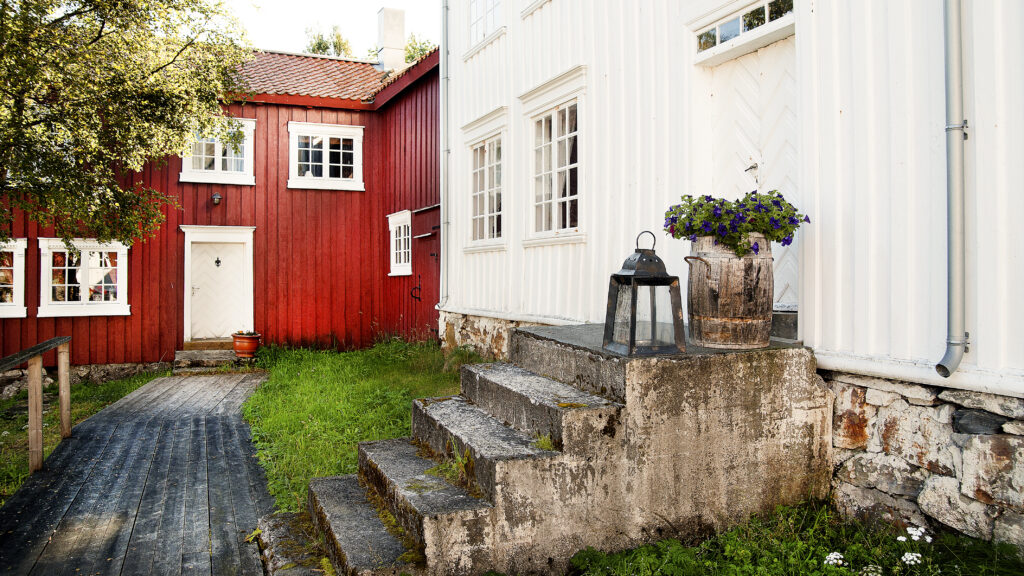 Mye i media, Rami Skonseng
Mye i media, Rami SkonsengStøtt
Near the northernmost edge of the Helgeland coast lies the old trading post of Støtt, nestled within the island cluster of the same name. Once, it was one of the last safe harbours for those heading to the Lofoten fisheries—a place to stock up on provisions and wait for fair weather before crossing the often unforgiving Vestfjorden. And to this day, just like back then, travellers enjoy the warm hospitality of this sheltered harbour—known as “the quiet fjerding,” a peaceful quarter of the coast.
 Hans Petter Sørensen, Faroutfocus.no / Visit Helgeland
Hans Petter Sørensen, Faroutfocus.no / Visit Helgeland
Today, the historic trading post has been carefully and thoughtfully restored. The old shop is now a fine restaurant, and the renovated buildings offer comfort and charm worthy of any seasoned sea-goer. The sheltered waters around Støtt are perfect for exploring by kayak, and a short boat ride to the mainland opens up to spectacular adventures: the Meløy Alps, Láhko National Park, and the majestic Svartisen glacier.
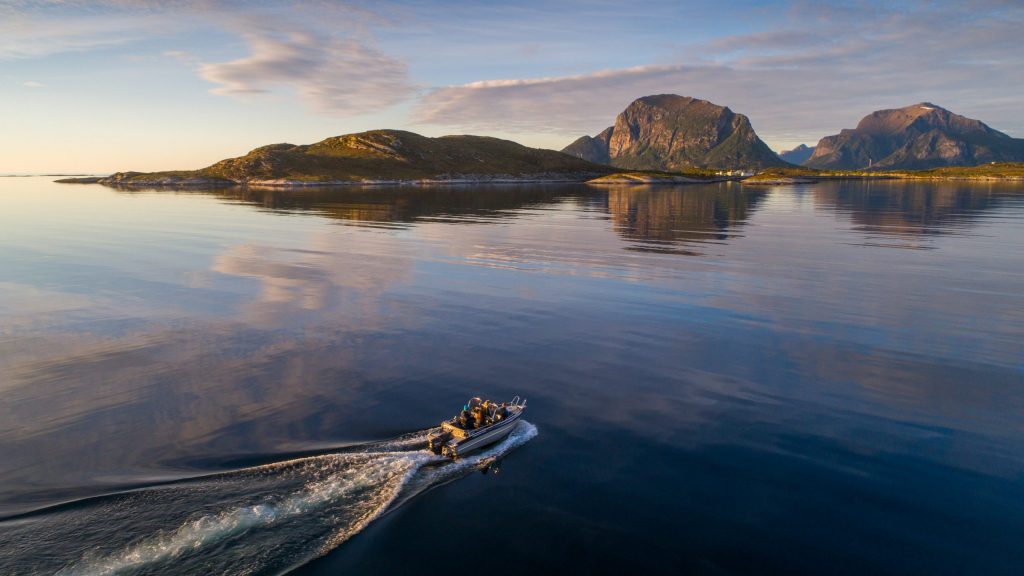 Hans Petter Sørensen / www.faroutfocus.no
Hans Petter Sørensen / www.faroutfocus.no